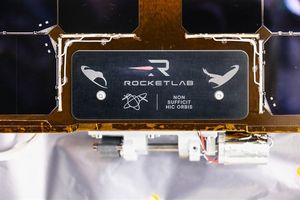
The intricate global semiconductor supply chain, the bedrock of the modern digital economy, is undergoing a profound transformation. A fresh look at this critical ecosystem reveals a highly specialized and geographically concentrated distribution of power: the United States leads unequivocally in chip design and the indispensable Electronic Design Automation (EDA) tools, while Europe, particularly the Netherlands-based ASML Holding N.V. (AMS:ASML), maintains an iron grip on advanced lithography equipment. Concurrently, Asia, predominantly Taiwan and South Korea, dominates the crucial stages of chip manufacturing and packaging. This disaggregated model, while fostering unprecedented efficiency and innovation, also introduces significant vulnerabilities and has elevated semiconductors to a strategic asset with profound geopolitical implications.
The immediate significance of this specialized structure lies in its inherent interdependence. No single nation or company possesses the full spectrum of capabilities to independently produce cutting-edge semiconductors. A state-of-the-art chip might be designed by a US firm, fabricated in Taiwan using Dutch lithography machines, Japanese chemicals, and then packaged in Southeast Asia. This creates a delicate balance, where the uninterrupted functioning of each regional specialty is paramount for the entire global technology ecosystem, especially as the world hurtles into the age of artificial intelligence (AI).
The Intricate Tapestry of Semiconductor Production: A Technical Deep Dive
The global semiconductor supply chain is a marvel of engineering and collaboration, yet its structure highlights critical chokepoints and areas of unchallenged dominance.
The United States maintains a strong lead in the crucial initial stages of the semiconductor value chain: chip design and the development of Electronic Design Automation (EDA) software. US firms account for approximately 46% of global chip design sales and a remarkable 72% of chip design software and license sales. Major American companies such as NVIDIA Corporation (NASDAQ: NVDA), Broadcom Inc. (NASDAQ: AVGO), Advanced Micro Devices, Inc. (NASDAQ: AMD), Qualcomm Incorporated (NASDAQ: QCOM), and Intel Corporation (NASDAQ: INTC) are at the forefront of designing the advanced chips that power everything from consumer electronics to artificial intelligence (AI) and high-performance computing. Several leading tech giants, including Alphabet Inc. (NASDAQ: GOOGL), Apple Inc. (NASDAQ: AAPL), Amazon.com, Inc. (NASDAQ: AMZN), Microsoft Corporation (NASDAQ: MSFT), and Tesla, Inc. (NASDAQ: TSLA), are also deeply involved in custom chip design, underscoring its strategic importance. Complementing this design prowess, US companies like Synopsys, Inc. (NASDAQ: SNPS) and Cadence Design Systems, Inc. (NASDAQ: CDNS) dominate the EDA tools market. These sophisticated software tools are indispensable for creating the intricate blueprints of modern integrated circuits, enabling engineers to design, verify, and test complex chip architectures before manufacturing. The rising complexity of electronic circuit designs, driven by advancements in AI, 5G, and the Internet of Things (IoT), further solidifies the critical role of these US-led EDA tools.
Europe's critical contribution to the semiconductor supply chain primarily resides in advanced lithography equipment, with the Dutch company ASML Holding N.V. (AMS:ASML) holding a near-monopoly. ASML is the sole global supplier of Extreme Ultraviolet (EUV) lithography machines, which are absolutely essential for manufacturing the most advanced semiconductor chips (typically those with features of 7 nanometers and below). These EUV machines are engineering marvels—immensely complex, expensive (costing up to $200 million each), and reliant on a global supply chain of approximately 5,000 suppliers. ASML's proprietary EUV technology is a key enabler of Moore's Law, allowing chipmakers to pack ever more transistors onto a single chip, thereby driving advancements in AI, 5G, high-performance computing, and next-generation consumer electronics. ASML is also actively developing next-generation High-NA EUV systems, which promise even finer resolutions for future 2nm nodes and beyond. This unparalleled technological edge makes ASML an indispensable "linchpin" in the global semiconductor industry, as no competitor currently possesses comparable capabilities.
Asia is the undisputed leader in the manufacturing and back-end processes of the semiconductor supply chain. This region, particularly Taiwan and South Korea, dominates the foundry segment, which involves the fabrication of chips designed by other companies. Taiwan Semiconductor Manufacturing Company Limited (NYSE: TSM) is the world's largest pure-play wafer foundry, consistently holding a commanding market share, recently reported ranging from 67.6% to 70.2%. This dominance is largely attributed to its cutting-edge manufacturing processes, enabling the mass production of the most advanced chips years ahead of competitors. South Korea's Samsung Electronics Co., Ltd. (KRX:005930) is the second-largest player through its Samsung Foundry division. China's Semiconductor Manufacturing International Corporation (HKG:0981) also holds a notable position. Beyond chip fabrication, Asia also leads in outsourced semiconductor assembly and test (OSAT) services, commonly referred to as packaging. Southeast Asian countries, including Malaysia, Singapore, Vietnam, and the Philippines, play a crucial role in these back-end operations (Assembly, Testing, and Packaging – ATP). Malaysia alone accounts for 13% of the global ATP market. Taiwan also boasts a well-connected manufacturing supply chain that includes strong OSAT companies. China, Taiwan, and South Korea collectively dominate the world's existing back-end capacity.
The AI Chip Race: Implications for Tech Giants and Startups
The current semiconductor supply chain structure profoundly impacts AI companies, tech giants, and startups, presenting both immense opportunities and significant challenges. The insatiable demand for high-performance chips, especially Graphics Processing Units (GPUs), Tensor Processing Units (TPUs), and specialized AI accelerators, is straining global production capacity. This can lead to sourcing difficulties, delays, and increased costs, directly affecting the pace of AI development and deployment.
Tech giants like Amazon Web Services (NASDAQ: AMZN), Meta Platforms, Inc. (NASDAQ: META), Microsoft Corporation (NASDAQ: MSFT), and Alphabet Inc. (NASDAQ: GOOGL) are aggressively investing in and optimizing their AI compute strategies, leading to higher capital expenditure that benefits the entire semiconductor supply chain. Many are pursuing vertical integration, designing their own custom AI silicon (Application-Specific Integrated Circuits or ASICs) to reduce reliance on external suppliers and optimize for their specific AI workloads. This allows them greater control over chip performance, efficiency, and supply security. Companies like NVIDIA Corporation (NASDAQ: NVDA) remain dominant with their GPUs, which are the de facto standard for AI training and inference, while Advanced Micro Devices, Inc. (NASDAQ: AMD)'s MI series accelerators are also challenging NVIDIA. Manufacturing equipment suppliers like ASML Holding N.V. (AMS:ASML), Applied Materials, Inc. (NASDAQ: AMAT), and Lam Research Corporation (NASDAQ: LRCX) are poised for substantial gains as chipmakers invest heavily in new fabrication plants (fabs) and advanced process technologies to meet AI demand. Taiwan Semiconductor Manufacturing Company Limited (NYSE: TSM) is a primary beneficiary, serving as the exclusive manufacturer for leading AI chip designers.
For AI startups, the semiconductor supply chain constraints pose significant hurdles. High barriers to entry for developing cutting-edge AI chips and the sheer complexity of chip production can limit their access to advanced hardware. Startups often lack the purchasing power and strategic relationships of larger tech giants, making them more vulnerable to supply shortages, delays, and increased costs. However, some startups are finding strategic advantages by leveraging AI itself in chip design to automate complex tasks, reduce human error, optimize power efficiency, and accelerate time-to-market. Additionally, collaborations are emerging, such as ASML's investment in and partnership with AI specialist Mistral AI, which provides funding and access to manufacturing expertise. The shift towards custom silicon by tech giants could also impact companies that rely solely on standard offerings, intensifying the "AI Chip Race" and fostering greater vertical integration across the industry.
Wider Significance: Geopolitics, National Security, and the AI Frontier
The global semiconductor supply chain's structure has transcended mere economic significance, becoming a pivotal element in national security, geopolitical strategy, and the broader AI landscape. Its distributed yet concentrated nature creates a system of profound interdependence but also critical vulnerabilities.
This disaggregated model has enabled unprecedented innovation and efficiency, allowing for the development of the high-performance chips necessary for AI's rapid growth. AI, particularly generative AI and large language models (LLMs), is driving an insatiable demand for advanced computing power, requiring increasingly sophisticated chips with innovations in energy efficiency, faster processing speed, and increased memory bandwidth. The ability to access and produce these chips is now a cornerstone of national technological competitiveness and military superiority. However, the surge in AI demand is also straining the supply chain, creating potential bottlenecks and extending lead times for cutting-edge components, thereby acting as both an enabler and a constraint for AI's progression.
The geopolitical impacts are stark. Semiconductors are now widely considered a strategic asset comparable to oil in the 20th century. The US-China technological rivalry is a prime example, with the US implementing export restrictions on advanced chipmaking technologies to constrain China's AI and military ambitions. China, in turn, is aggressively investing in domestic capabilities to achieve self-sufficiency. Taiwan's indispensable role, particularly TSMC's (NYSE: TSM) dominance in advanced manufacturing, makes it a critical flashpoint; any disruption to its foundries could trigger catastrophic global economic consequences, with potential revenue losses of hundreds of billions of dollars annually for electronic device manufacturers. This has spurred "reshoring" efforts, with initiatives like the US CHIPS and Science Act and the EU Chips Act funneling billions into bolstering domestic manufacturing capabilities to reduce reliance on concentrated foreign supply chains.
Potential concerns abound due to the high geographic concentration and single points of failure. Over 50 points in the value chain see one region holding more than 65% of the global market share, making the entire ecosystem vulnerable to natural disasters, infrastructure shutdowns, or international conflicts. The COVID-19 pandemic vividly exposed these fragilities, causing widespread shortages. Furthermore, the immense capital expenditure and years of lead time required to build and maintain advanced fabs limit the number of players, while critical talent shortages threaten to impede future innovation. This marks a significant departure from the vertically integrated semiconductor industry of the past and even the simpler duopolies of the PC era; the current global interdependence makes it a truly unique and complex challenge.
Charting the Course: Future Developments and Predictions
The global semiconductor supply chain is poised for significant evolution in the coming years, driven by ongoing geopolitical shifts, technological advancements, and a renewed focus on resilience.
In the near-term (1-3 years), we can expect a continued acceleration of regionalization and reshoring efforts. The US, propelled by the CHIPS Act, is projected to significantly increase its fab capacity, aiming for 14% of global aggregate fab capacity by 2032, up from 10%. Asian semiconductor suppliers are already relocating operations from China to other Southeast Asian countries like Malaysia, Thailand, and the Philippines to diversify production. Even ASML Holding N.V. (AMS:ASML) is exploring assembling "dry" DUV chip machines in Southeast Asia, though final assembly of advanced EUV systems will likely remain in the Netherlands. Supply chain resilience and visibility will be paramount, with companies investing in diverse supplier networks and real-time tracking. The relentless demand from generative AI will continue to be a primary driver, particularly for high-performance computing and specialized AI accelerators.
Looking at long-term developments (beyond 3-5 years), the diversification of wafer fabrication capacity is expected to extend beyond Taiwan and South Korea to include the US, Europe, and Japan by 2032. Advanced packaging techniques, such as 3D and wafer-level packaging, will become increasingly critical for enhancing AI chip performance and energy efficiency, with capacity expected to grow significantly. The industry will also intensify its focus on sustainability and green manufacturing, adopting greener chemistry and reducing its environmental footprint. Crucially, AI itself will be leveraged to transform semiconductor design and manufacturing, optimizing chip architectures, improving yield rates, and accelerating time-to-market. While East Asia will likely retain significant ATP capacity, a longer-term shift towards other regions, including Latin America and Europe, is anticipated with sustained policy support.
The potential applications stemming from these developments are vast, underpinning advancements in Artificial Intelligence and Machine Learning, 5G and beyond, automotive technology (electric vehicles and autonomous driving), the Internet of Things (IoT) and edge computing, high-performance computing, and even quantum computing. However, significant challenges remain, including persistent geopolitical tensions and trade restrictions, the inherent cyclicality and supply-demand imbalances of the industry, the astronomically high costs of building new fabs, and critical talent shortages. Experts predict the global semiconductor market will exceed $1 trillion by 2030, driven largely by AI. This growth will be fueled by sustained policy support, massive investments, and strong collaboration across governments, companies, and research institutions to build truly resilient supply chains.
A New Global Order: Resilience Over Efficiency
The analysis of the global semiconductor supply chain reveals a critical juncture in technological history. The current distribution of power—with the US leading in design and essential EDA tools, ASML Holding N.V. (AMS:ASML) holding a near-monopoly on advanced lithography, and Asia dominating manufacturing and packaging—has been a recipe for unprecedented innovation and efficiency. However, this finely tuned machine has also exposed profound vulnerabilities, particularly in an era of escalating geopolitical tensions and an insatiable demand for AI-enabling hardware.
The significance of this development in AI history cannot be overstated. Semiconductors are the literal engines of the AI revolution. The ability to design, fabricate, and package ever more powerful and efficient chips directly dictates the pace of AI advancement, from the training of colossal large language models to the deployment of intelligent edge devices. The "AI supercycle" is not merely driving demand; it is fundamentally reshaping the semiconductor industry's strategic priorities, pushing it towards innovation in advanced packaging, specialized accelerators, and more resilient production models.
In the long term, we are witnessing a fundamental shift from a "just-in-time" globalized supply chain optimized purely for efficiency to a "just-in-case" model prioritizing resilience and national security. While this will undoubtedly lead to increased costs—with projections of 5% to 20% higher expenses—the drive for technological sovereignty will continue to fuel massive investments in regional chip manufacturing across the US, Europe, and Asia. The industry is projected to reach annual sales of $1 trillion by 2030, a testament to its enduring importance and the continuous innovation it enables.
In the coming weeks and months, several critical factors bear watching. Any further refinements or enforcement of export controls by the US Department of Commerce, particularly those targeting China's access to advanced AI chips and manufacturing tools, will reverberate globally. China's response, including its advancements in domestic chip production and potential further restrictions on rare earth element exports, will be crucial indicators of geopolitical leverage. The progress of new fabrication facilities under national chip initiatives like the US CHIPS Act and the EU Chips Act, as well as TSMC's (NYSE: TSM) anticipated volume production of 2-nanometer (N2) nodes in late 2025, will mark significant milestones. Finally, the relentless "AI explosion" will continue to drive demand for High Bandwidth Memory (HBM) and specialized AI semiconductors, shaping market dynamics and supply chain pressures for the foreseeable future.
This content is intended for informational purposes only and represents analysis of current AI developments.
TokenRing AI delivers enterprise-grade solutions for multi-agent AI workflow orchestration, AI-powered development tools, and seamless remote collaboration platforms.
For more information, visit https://www.tokenring.ai/.





